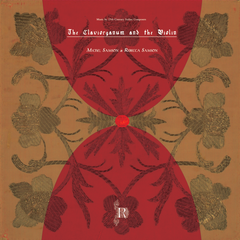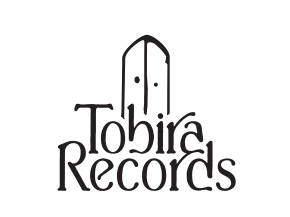クイックビュー
{"id":9023240012026,"title":"Demetrio Stratos \/\/ Satyricon '79 DELUXE LP BOX","handle":"demetrio-stratos-satyricon-79-deluxe-lp-box","description":"\u003cp\u003eエジプトの実験音楽家(1945-1979)が、2025年10月にイタリアの実験レーベルDie SchachtelからリリースしたレコードBOXです。\u003c\/p\u003e\n\u003cp\u003e演劇用に制作した19曲を収録。60ページのレコードサイズブックレットとポスター付属。\u003c\/p\u003e\n\u003cp\u003e※デジタル音源を無料でお送りいたしますのでお気軽にご連絡くださいませ\u003c\/p\u003e\n\u003cp\u003e以下、レーベルによる解説です。\u003c\/p\u003e\n\u003cp\u003e\u003cem\u003e\"演劇アーカイブの世界には、知られるもの、知られざるもの、忘れ去られたもの、そして失われたものが存在するDemetrio Stratosが、後にアカデミー賞を受賞するガブリエーレ・サルヴァトーレ監督のもと、1979年にテアトロ・デル・エルフォが上演した画期的な作品『Satyricon』のために手掛けた舞台音楽は、まさにそのような失われた遺物の一つである。拡張されたボーカルテクニック、バリの楽器、そして先駆的なクジラの鳴き声の録音などを統合したこの過激な音響作品は、イタリアで最も先見の明のあるボーカル実験家による最後の傑作として、Die Schachtelによる驚異的な発見まで40年以上も失われたままであった。\u003c\/em\u003e\u003c\/p\u003e\n\u003cp\u003e\u003cem\u003eそれは1979年、テアトロ・デル・エルフォの歴史的劇場開場を飾った狂乱の没入型演劇イベントの一部として誕生したが、ほぼ完全に忘れ去られ、失われ、やがて存在すら知られなくなった。この初演は劇団にとって根本的な転換点となった——大衆的な街頭演劇から脱却し、暗く没入的で洗練されたスペクタクルへと変貌。舞台空間は砂敷きの粗削りな木製アリーナへと変貌を遂げた。Demetrio Stratosは、パオロ・トファニ(エリアのメンバー仲間)と協力し、舞台音楽のあらゆる従来の機能を覆す、音による宇宙全体を創り出した。彼らの作曲は単なる伴奏ではなく、拡張されたボーカルテクニック、古風な電子要素、ナイフルート、バリの楽器、そして先駆的なクジラの鳴き声の録音などを統合した、自律的な音響劇作であった。\u003c\/em\u003e\u003c\/p\u003e\n\u003cp\u003e\u003cem\u003eその結果、観客を包み込む立体的な音響空間が生まれ、異次元の音響次元が創出された。Stratosの音楽は俳優たちの発声法にまで介入し、録音には演技そのものと、彼がキャストと行った指導セッションの両方が収められていた。この舞台には、後に名声を得る若手俳優たち―エリオ・デ・カピターニ、フェルディナンド・ブルーニ、クリスティーナ・クリッパ、コリーナ・アグストーニ、イーダ・マリネッリ―が参加。ペトロニウスの古代小説を脚色した本作では、後にアカデミー賞受賞者となるガブリエーレ・サルヴァトーレが演出を担当した。『Satyricon』公演直後、Stratosは病に倒れ、わずか34歳でこの世を去ることとなる。本作は彼の最後の作品であり、イタリアで最も革新的な音響芸術家の一人による、忘れがたい別れの贈り物である。、Die Schachtelは、テアトロ・デッレルフォおよびラヴェンナのマラゴラ音声・音響研究センター(デメトリオ・ストラトス・アーカイブの所在地)との協力により、オリジナル磁気テープから回収された本作を、アンドレア・マルッティによる入念な修復・マスタリングを経て発表する。\u003c\/em\u003e\u003cbr\u003e\u003c\/p\u003e\n\u003cp\u003e\u003cem\u003eSatyricon '79 は1970年代イタリア前衛芸術の偉大な遺産のひとつである。協働と創造的挑戦の精神で生み出された、荒々しく研ぎ澄まされた音響の暴露であり、聴く者をその深淵へと引きずり込む。本版には批評的付録として、エッセイ、主要関係者による証言、当時の写真資料が収録され、演劇、声の研究、音響実験が交錯した再現不可能な瞬間を記録している。本リリースは実験音楽史における痛切な瞬間を刻む——Stratosの遺作がアーカイブから救出され、イタリア前衛芸術の傑作群にふさわしい地位に復帰した。歴史的に極めて重要な、真に驚異的な作品である。\u003c\/em\u003e\u003c\/p\u003e\n\u003cp\u003e\u003cem\u003e実験音楽ファン、あるいはイタリア前衛芸術史を学ぶ者にとって、これ以上の必須盤はない。\"\u003c\/em\u003e\u003c\/p\u003e\n\u003cp\u003e\u003ciframe style=\"border: 0; width: 100%; height: 120px;\" src=\"https:\/\/bandcamp.com\/EmbeddedPlayer\/album=1919286039\/size=large\/bgcol=ffffff\/linkcol=0687f5\/tracklist=false\/artwork=none\/transparent=true\/\"\u003e\u003c\/iframe\u003e\u003c\/p\u003e\n\u003cp\u003e\u003cspan\u003eレーベルその他作品は\u003c\/span\u003e\u003ca href=\"https:\/\/tobirarecords.com\/collections\/disc\"\u003eこちら\u003c\/a\u003e\u003ca href=\"https:\/\/tobirarecords.com\/collections\/die-schachtel%20\"\u003e\u003c\/a\u003e\u003cspan\u003e \/\/\/ Click \u003c\/span\u003e\u003ca href=\"https:\/\/tobirarecords.com\/collections\/disc\"\u003ehere\u003c\/a\u003e\u003cspan\u003e to see more \u003c\/span\u003e\u003cspan\u003eDie Schachtel \/ Blume \/ Oblio \/ Dischi Fantom releases available at Tobira.\u003c\/span\u003e\u003cbr\u003e\u003c\/p\u003e\n\u003cp\u003e\u003cspan\u003e--------------------------------------------\u003c\/span\u003e\u003c\/p\u003e\n\u003cp\u003e\u003cspan\u003eDELUXE version of 'Satyricon '79' contains 12\" black vinyl + large poster + 60-page LP-sized book in English and Italian.\u003cbr\u003eDeluxe edition of 200 copies.\u003c\/span\u003e\u003c\/p\u003e\n\u003cp\u003e\u003cstrong\u003eTracklist\u003c\/strong\u003e:\u003c\/p\u003e\n\u003cp class=\"MsoNormal\"\u003e1. Filastrocca (Nursery rhyme) 01:11\u003cbr\u003e2. Scuola di retorica (School of Rethorics) 02:08\u003cbr\u003e3. Retarius in lotta (Retarius’ fight) 02:13\u003cbr\u003e\u003cspan style=\"font-family: -apple-system, BlinkMacSystemFont, 'San Francisco', 'Segoe UI', Roboto, 'Helvetica Neue', sans-serif; font-size: 0.875rem;\"\u003e4. Scena, Fiaba, Pantomima (Scene, Tale, Pantomime) 05:24\u003cbr\u003e\u003c\/span\u003e\u003cspan style=\"font-family: -apple-system, BlinkMacSystemFont, 'San Francisco', 'Segoe UI', Roboto, 'Helvetica Neue', sans-serif; font-size: 0.875rem;\"\u003e5. Quartilla 00:31\u003cbr\u003e\u003c\/span\u003e\u003cspan style=\"font-family: -apple-system, BlinkMacSystemFont, 'San Francisco', 'Segoe UI', Roboto, 'Helvetica Neue', sans-serif; font-size: 0.875rem;\"\u003e6. Quartiere dei bordelli (Brothels’quarter) 02:26\u003cbr\u003e\u003c\/span\u003e7. Mercato, nebbia (Market, Fog) 01:02\u003cbr\u003e8. Orgia (Orgy) 02:34\u003cbr\u003e9. Bali 07:02\u003cbr\u003e10. Epitaffio (Epitaph) 01:09\u003cbr\u003e11. La nave (The ship) 01:34\u003cbr\u003e12. Inizio tempesta (Storm begins) 01:04\u003cbr\u003e13. Tempesta violenta (Violent storm) 01:30\u003cbr\u003e14. Succhiata (Sucking) 00:12\u003cbr\u003e15. Naufragio (Shipwreck) 01:33\u003cbr\u003e16. Giardino di Circe (Circe’s garden) 00:43\u003cbr\u003e17. Proseleno 00:51\u003cbr\u003e18. La Maga (The Witch) 01:18\u003cbr\u003e19. Mangiando il cadavere + L'uccello 02:27\u003c\/p\u003e\n\u003cp\u003eDie Schachtel:\u003c\/p\u003e\n\u003cp\u003e\u003cspan\u003e\"\u003cmeta charset=\"utf-8\"\u003e \u003cem\u003eIn the world of theatrical archives, there are the known, the unknown, the forgotten, and the lost. Demetrio Stratos' stage compositions for Teatro dell'Elfo's groundbreaking 1979 production Satyricon - directed by future Oscar winner Gabriele Salvatores - represents one such lost artifact now wondrously returned to life. This radical sonic work, integrating extended vocal techniques, Balinese instruments, and pioneering whale song recordings, stands as the final masterpiece of Italy's most visionary vocal experimenter, lost for over four decades until Die Schachtel's extraordinary \u003cspan id=\"package_description_1\" class=\"peekaboo-text\"\u003erecovery.\u003cbr\u003e\u003cspan class=\"lightweightBreak\"\u003e\u003c\/span\u003e\u003cbr\u003eIt began as part of something known - a wild, immersive theatrical event that inaugurated Teatro dell'Elfo's historic venue\u003c\/span\u003e\u003cspan class=\"bcTruncateMore\"\u003e\u003cspan id=\"package_description_1\" class=\"peekaboo-text\"\u003e in 1979 - and was almost entirely forgotten, becoming lost and then unknown. The original production marked a radical departure for the company: no longer popular street theatre, but a dark, immersive, sophisticated spectacle that transformed their space into a rough wooden arena with a sand floor. Demetrio Stratos, working with Paolo Tofani (fellow Area member), created an entire sonic universe that subverted every conventional function of stage music. Their composition wasn't just accompaniment, but autonomous sonic dramaturgy that integrated extended vocal techniques, archaic electronic elements, Nay flutes, Balinese instruments, and pioneering whale song recordings.\u003cbr\u003e\u003cspan class=\"lightweightBreak\"\u003e\u003c\/span\u003e\u003cbr\u003eThe result was a three-dimensional soundscape that enveloped audiences, creating an otherworldly acoustic dimension. Stratos' score even intervened in the actors' vocal delivery, with the recordings capturing both the performance and his coaching sessions with the cast. The production featured young actors destined for fame - Elio De Capitani, Ferdinando Bruni, Cristina Crippa, Corinna Agustoni, Ida Marinelli - guided by future Academy Award winner Gabriele Salvatores in this adaptation of Petronius' ancient novel. Shortly after the Satyricon performances, Stratos was hospitalized for the condition that would lead to his death at just 34 years old. This work represents his final composition - a haunting farewell from one of Italy's most innovative sound artists. Die Schachtel presents this recovered work in collaboration with Teatro dell'Elfo and the Centro di Ricerca Vocale e Sonora Malagola di Ravenna (home of the Archivio Demetrio Stratos), pulled from the original magnetic tape and carefully restored and mastered by Andrea Marutti.\u003cbr\u003e\u003cspan class=\"lightweightBreak\"\u003e\u003c\/span\u003e\u003cbr\u003eSatyricon '79 is one of the great artifacts of 1970s Italian avant-garde - a wild, grinding sonic expose which sucks the ear into its depths, made in the spirit of collaboration and creative risk-taking. The edition includes critical apparatus with essays, testimonies from protagonists, and period photographic documentation, documenting an unrepeatable moment where theatre, vocal research and sonic experimentation converged. This release marks a poignant moment in experimental music history - Stratos' final work, now rescued from the archives and restored to its rightful place in the canon of Italian avant-garde masterpieces. A true wonder of towering historical importance.\u003cbr\u003e\u003cspan class=\"lightweightBreak\"\u003e\u003c\/span\u003e\u003cbr\u003eAs essential as it gets for any fan of experimental music, or the history of the Italian avant-garde.\"\u003c\/span\u003e\u003c\/span\u003e\u003c\/em\u003e\u003c\/span\u003e\u003c\/p\u003e\n\u003cp\u003e\u003cspan\u003eArtist : Demetrio Stratos\u003c\/span\u003e\u003c\/p\u003e\n\u003cp\u003e\u003cspan\u003eLabel : Die Schachtel\u003c\/span\u003e\u003c\/p\u003e\n\u003cp\u003e\u003cspan\u003ecat no : \u003cmeta charset=\"utf-8\"\u003eDS50\u003c\/span\u003e\u003c\/p\u003e\n\u003cp\u003e\u003cspan\u003eRelease date : 30th September 2025\u003c\/span\u003e\u003c\/p\u003e","published_at":"2025-12-17T15:00:23+09:00","created_at":"2025-12-09T10:37:05+09:00","vendor":"Tobira Records","type":"","tags":["contemporary \/ sound poetry","Die Schachtel","lp","monooto","new"],"price":1548000,"price_min":1548000,"price_max":1548000,"available":true,"price_varies":false,"compare_at_price":null,"compare_at_price_min":0,"compare_at_price_max":0,"compare_at_price_varies":false,"variants":[{"id":48080841769210,"title":"Default Title","option1":"Default Title","option2":null,"option3":null,"sku":null,"requires_shipping":true,"taxable":true,"featured_image":null,"available":true,"name":"Demetrio Stratos \/\/ Satyricon '79 DELUXE LP BOX","public_title":null,"options":["Default Title"],"price":1548000,"weight":1100,"compare_at_price":null,"inventory_management":"shopify","barcode":null,"requires_selling_plan":false,"selling_plan_allocations":[]}],"images":["\/\/tobirarecords.com\/cdn\/shop\/files\/dem1_5b2dbb5f-929d-4e77-a6e4-0533f2d5d37d.jpg?v=1765244342","\/\/tobirarecords.com\/cdn\/shop\/files\/dem3_50ef9d2c-d79b-48d1-a289-32f971bb95a3.jpg?v=1765244342","\/\/tobirarecords.com\/cdn\/shop\/files\/dem4.jpg?v=1765244342","\/\/tobirarecords.com\/cdn\/shop\/files\/dem5.jpg?v=1765244342"],"featured_image":"\/\/tobirarecords.com\/cdn\/shop\/files\/dem1_5b2dbb5f-929d-4e77-a6e4-0533f2d5d37d.jpg?v=1765244342","options":["Title"],"media":[{"alt":null,"id":37735224312058,"position":1,"preview_image":{"aspect_ratio":1.0,"height":700,"width":700,"src":"\/\/tobirarecords.com\/cdn\/shop\/files\/dem1_5b2dbb5f-929d-4e77-a6e4-0533f2d5d37d.jpg?v=1765244342"},"aspect_ratio":1.0,"height":700,"media_type":"image","src":"\/\/tobirarecords.com\/cdn\/shop\/files\/dem1_5b2dbb5f-929d-4e77-a6e4-0533f2d5d37d.jpg?v=1765244342","width":700},{"alt":null,"id":37735224344826,"position":2,"preview_image":{"aspect_ratio":1.0,"height":1200,"width":1200,"src":"\/\/tobirarecords.com\/cdn\/shop\/files\/dem3_50ef9d2c-d79b-48d1-a289-32f971bb95a3.jpg?v=1765244342"},"aspect_ratio":1.0,"height":1200,"media_type":"image","src":"\/\/tobirarecords.com\/cdn\/shop\/files\/dem3_50ef9d2c-d79b-48d1-a289-32f971bb95a3.jpg?v=1765244342","width":1200},{"alt":null,"id":37735224377594,"position":3,"preview_image":{"aspect_ratio":1.278,"height":939,"width":1200,"src":"\/\/tobirarecords.com\/cdn\/shop\/files\/dem4.jpg?v=1765244342"},"aspect_ratio":1.278,"height":939,"media_type":"image","src":"\/\/tobirarecords.com\/cdn\/shop\/files\/dem4.jpg?v=1765244342","width":1200},{"alt":null,"id":37735224410362,"position":4,"preview_image":{"aspect_ratio":1.423,"height":843,"width":1200,"src":"\/\/tobirarecords.com\/cdn\/shop\/files\/dem5.jpg?v=1765244342"},"aspect_ratio":1.423,"height":843,"media_type":"image","src":"\/\/tobirarecords.com\/cdn\/shop\/files\/dem5.jpg?v=1765244342","width":1200}],"requires_selling_plan":false,"selling_plan_groups":[],"content":"\u003cp\u003eエジプトの実験音楽家(1945-1979)が、2025年10月にイタリアの実験レーベルDie SchachtelからリリースしたレコードBOXです。\u003c\/p\u003e\n\u003cp\u003e演劇用に制作した19曲を収録。60ページのレコードサイズブックレットとポスター付属。\u003c\/p\u003e\n\u003cp\u003e※デジタル音源を無料でお送りいたしますのでお気軽にご連絡くださいませ\u003c\/p\u003e\n\u003cp\u003e以下、レーベルによる解説です。\u003c\/p\u003e\n\u003cp\u003e\u003cem\u003e\"演劇アーカイブの世界には、知られるもの、知られざるもの、忘れ去られたもの、そして失われたものが存在するDemetrio Stratosが、後にアカデミー賞を受賞するガブリエーレ・サルヴァトーレ監督のもと、1979年にテアトロ・デル・エルフォが上演した画期的な作品『Satyricon』のために手掛けた舞台音楽は、まさにそのような失われた遺物の一つである。拡張されたボーカルテクニック、バリの楽器、そして先駆的なクジラの鳴き声の録音などを統合したこの過激な音響作品は、イタリアで最も先見の明のあるボーカル実験家による最後の傑作として、Die Schachtelによる驚異的な発見まで40年以上も失われたままであった。\u003c\/em\u003e\u003c\/p\u003e\n\u003cp\u003e\u003cem\u003eそれは1979年、テアトロ・デル・エルフォの歴史的劇場開場を飾った狂乱の没入型演劇イベントの一部として誕生したが、ほぼ完全に忘れ去られ、失われ、やがて存在すら知られなくなった。この初演は劇団にとって根本的な転換点となった——大衆的な街頭演劇から脱却し、暗く没入的で洗練されたスペクタクルへと変貌。舞台空間は砂敷きの粗削りな木製アリーナへと変貌を遂げた。Demetrio Stratosは、パオロ・トファニ(エリアのメンバー仲間)と協力し、舞台音楽のあらゆる従来の機能を覆す、音による宇宙全体を創り出した。彼らの作曲は単なる伴奏ではなく、拡張されたボーカルテクニック、古風な電子要素、ナイフルート、バリの楽器、そして先駆的なクジラの鳴き声の録音などを統合した、自律的な音響劇作であった。\u003c\/em\u003e\u003c\/p\u003e\n\u003cp\u003e\u003cem\u003eその結果、観客を包み込む立体的な音響空間が生まれ、異次元の音響次元が創出された。Stratosの音楽は俳優たちの発声法にまで介入し、録音には演技そのものと、彼がキャストと行った指導セッションの両方が収められていた。この舞台には、後に名声を得る若手俳優たち―エリオ・デ・カピターニ、フェルディナンド・ブルーニ、クリスティーナ・クリッパ、コリーナ・アグストーニ、イーダ・マリネッリ―が参加。ペトロニウスの古代小説を脚色した本作では、後にアカデミー賞受賞者となるガブリエーレ・サルヴァトーレが演出を担当した。『Satyricon』公演直後、Stratosは病に倒れ、わずか34歳でこの世を去ることとなる。本作は彼の最後の作品であり、イタリアで最も革新的な音響芸術家の一人による、忘れがたい別れの贈り物である。、Die Schachtelは、テアトロ・デッレルフォおよびラヴェンナのマラゴラ音声・音響研究センター(デメトリオ・ストラトス・アーカイブの所在地)との協力により、オリジナル磁気テープから回収された本作を、アンドレア・マルッティによる入念な修復・マスタリングを経て発表する。\u003c\/em\u003e\u003cbr\u003e\u003c\/p\u003e\n\u003cp\u003e\u003cem\u003eSatyricon '79 は1970年代イタリア前衛芸術の偉大な遺産のひとつである。協働と創造的挑戦の精神で生み出された、荒々しく研ぎ澄まされた音響の暴露であり、聴く者をその深淵へと引きずり込む。本版には批評的付録として、エッセイ、主要関係者による証言、当時の写真資料が収録され、演劇、声の研究、音響実験が交錯した再現不可能な瞬間を記録している。本リリースは実験音楽史における痛切な瞬間を刻む——Stratosの遺作がアーカイブから救出され、イタリア前衛芸術の傑作群にふさわしい地位に復帰した。歴史的に極めて重要な、真に驚異的な作品である。\u003c\/em\u003e\u003c\/p\u003e\n\u003cp\u003e\u003cem\u003e実験音楽ファン、あるいはイタリア前衛芸術史を学ぶ者にとって、これ以上の必須盤はない。\"\u003c\/em\u003e\u003c\/p\u003e\n\u003cp\u003e\u003ciframe style=\"border: 0; width: 100%; height: 120px;\" src=\"https:\/\/bandcamp.com\/EmbeddedPlayer\/album=1919286039\/size=large\/bgcol=ffffff\/linkcol=0687f5\/tracklist=false\/artwork=none\/transparent=true\/\"\u003e\u003c\/iframe\u003e\u003c\/p\u003e\n\u003cp\u003e\u003cspan\u003eレーベルその他作品は\u003c\/span\u003e\u003ca href=\"https:\/\/tobirarecords.com\/collections\/disc\"\u003eこちら\u003c\/a\u003e\u003ca href=\"https:\/\/tobirarecords.com\/collections\/die-schachtel%20\"\u003e\u003c\/a\u003e\u003cspan\u003e \/\/\/ Click \u003c\/span\u003e\u003ca href=\"https:\/\/tobirarecords.com\/collections\/disc\"\u003ehere\u003c\/a\u003e\u003cspan\u003e to see more \u003c\/span\u003e\u003cspan\u003eDie Schachtel \/ Blume \/ Oblio \/ Dischi Fantom releases available at Tobira.\u003c\/span\u003e\u003cbr\u003e\u003c\/p\u003e\n\u003cp\u003e\u003cspan\u003e--------------------------------------------\u003c\/span\u003e\u003c\/p\u003e\n\u003cp\u003e\u003cspan\u003eDELUXE version of 'Satyricon '79' contains 12\" black vinyl + large poster + 60-page LP-sized book in English and Italian.\u003cbr\u003eDeluxe edition of 200 copies.\u003c\/span\u003e\u003c\/p\u003e\n\u003cp\u003e\u003cstrong\u003eTracklist\u003c\/strong\u003e:\u003c\/p\u003e\n\u003cp class=\"MsoNormal\"\u003e1. Filastrocca (Nursery rhyme) 01:11\u003cbr\u003e2. Scuola di retorica (School of Rethorics) 02:08\u003cbr\u003e3. Retarius in lotta (Retarius’ fight) 02:13\u003cbr\u003e\u003cspan style=\"font-family: -apple-system, BlinkMacSystemFont, 'San Francisco', 'Segoe UI', Roboto, 'Helvetica Neue', sans-serif; font-size: 0.875rem;\"\u003e4. Scena, Fiaba, Pantomima (Scene, Tale, Pantomime) 05:24\u003cbr\u003e\u003c\/span\u003e\u003cspan style=\"font-family: -apple-system, BlinkMacSystemFont, 'San Francisco', 'Segoe UI', Roboto, 'Helvetica Neue', sans-serif; font-size: 0.875rem;\"\u003e5. Quartilla 00:31\u003cbr\u003e\u003c\/span\u003e\u003cspan style=\"font-family: -apple-system, BlinkMacSystemFont, 'San Francisco', 'Segoe UI', Roboto, 'Helvetica Neue', sans-serif; font-size: 0.875rem;\"\u003e6. Quartiere dei bordelli (Brothels’quarter) 02:26\u003cbr\u003e\u003c\/span\u003e7. Mercato, nebbia (Market, Fog) 01:02\u003cbr\u003e8. Orgia (Orgy) 02:34\u003cbr\u003e9. Bali 07:02\u003cbr\u003e10. Epitaffio (Epitaph) 01:09\u003cbr\u003e11. La nave (The ship) 01:34\u003cbr\u003e12. Inizio tempesta (Storm begins) 01:04\u003cbr\u003e13. Tempesta violenta (Violent storm) 01:30\u003cbr\u003e14. Succhiata (Sucking) 00:12\u003cbr\u003e15. Naufragio (Shipwreck) 01:33\u003cbr\u003e16. Giardino di Circe (Circe’s garden) 00:43\u003cbr\u003e17. Proseleno 00:51\u003cbr\u003e18. La Maga (The Witch) 01:18\u003cbr\u003e19. Mangiando il cadavere + L'uccello 02:27\u003c\/p\u003e\n\u003cp\u003eDie Schachtel:\u003c\/p\u003e\n\u003cp\u003e\u003cspan\u003e\"\u003cmeta charset=\"utf-8\"\u003e \u003cem\u003eIn the world of theatrical archives, there are the known, the unknown, the forgotten, and the lost. Demetrio Stratos' stage compositions for Teatro dell'Elfo's groundbreaking 1979 production Satyricon - directed by future Oscar winner Gabriele Salvatores - represents one such lost artifact now wondrously returned to life. This radical sonic work, integrating extended vocal techniques, Balinese instruments, and pioneering whale song recordings, stands as the final masterpiece of Italy's most visionary vocal experimenter, lost for over four decades until Die Schachtel's extraordinary \u003cspan id=\"package_description_1\" class=\"peekaboo-text\"\u003erecovery.\u003cbr\u003e\u003cspan class=\"lightweightBreak\"\u003e\u003c\/span\u003e\u003cbr\u003eIt began as part of something known - a wild, immersive theatrical event that inaugurated Teatro dell'Elfo's historic venue\u003c\/span\u003e\u003cspan class=\"bcTruncateMore\"\u003e\u003cspan id=\"package_description_1\" class=\"peekaboo-text\"\u003e in 1979 - and was almost entirely forgotten, becoming lost and then unknown. The original production marked a radical departure for the company: no longer popular street theatre, but a dark, immersive, sophisticated spectacle that transformed their space into a rough wooden arena with a sand floor. Demetrio Stratos, working with Paolo Tofani (fellow Area member), created an entire sonic universe that subverted every conventional function of stage music. Their composition wasn't just accompaniment, but autonomous sonic dramaturgy that integrated extended vocal techniques, archaic electronic elements, Nay flutes, Balinese instruments, and pioneering whale song recordings.\u003cbr\u003e\u003cspan class=\"lightweightBreak\"\u003e\u003c\/span\u003e\u003cbr\u003eThe result was a three-dimensional soundscape that enveloped audiences, creating an otherworldly acoustic dimension. Stratos' score even intervened in the actors' vocal delivery, with the recordings capturing both the performance and his coaching sessions with the cast. The production featured young actors destined for fame - Elio De Capitani, Ferdinando Bruni, Cristina Crippa, Corinna Agustoni, Ida Marinelli - guided by future Academy Award winner Gabriele Salvatores in this adaptation of Petronius' ancient novel. Shortly after the Satyricon performances, Stratos was hospitalized for the condition that would lead to his death at just 34 years old. This work represents his final composition - a haunting farewell from one of Italy's most innovative sound artists. Die Schachtel presents this recovered work in collaboration with Teatro dell'Elfo and the Centro di Ricerca Vocale e Sonora Malagola di Ravenna (home of the Archivio Demetrio Stratos), pulled from the original magnetic tape and carefully restored and mastered by Andrea Marutti.\u003cbr\u003e\u003cspan class=\"lightweightBreak\"\u003e\u003c\/span\u003e\u003cbr\u003eSatyricon '79 is one of the great artifacts of 1970s Italian avant-garde - a wild, grinding sonic expose which sucks the ear into its depths, made in the spirit of collaboration and creative risk-taking. The edition includes critical apparatus with essays, testimonies from protagonists, and period photographic documentation, documenting an unrepeatable moment where theatre, vocal research and sonic experimentation converged. This release marks a poignant moment in experimental music history - Stratos' final work, now rescued from the archives and restored to its rightful place in the canon of Italian avant-garde masterpieces. A true wonder of towering historical importance.\u003cbr\u003e\u003cspan class=\"lightweightBreak\"\u003e\u003c\/span\u003e\u003cbr\u003eAs essential as it gets for any fan of experimental music, or the history of the Italian avant-garde.\"\u003c\/span\u003e\u003c\/span\u003e\u003c\/em\u003e\u003c\/span\u003e\u003c\/p\u003e\n\u003cp\u003e\u003cspan\u003eArtist : Demetrio Stratos\u003c\/span\u003e\u003c\/p\u003e\n\u003cp\u003e\u003cspan\u003eLabel : Die Schachtel\u003c\/span\u003e\u003c\/p\u003e\n\u003cp\u003e\u003cspan\u003ecat no : \u003cmeta charset=\"utf-8\"\u003eDS50\u003c\/span\u003e\u003c\/p\u003e\n\u003cp\u003e\u003cspan\u003eRelease date : 30th September 2025\u003c\/span\u003e\u003c\/p\u003e"}







